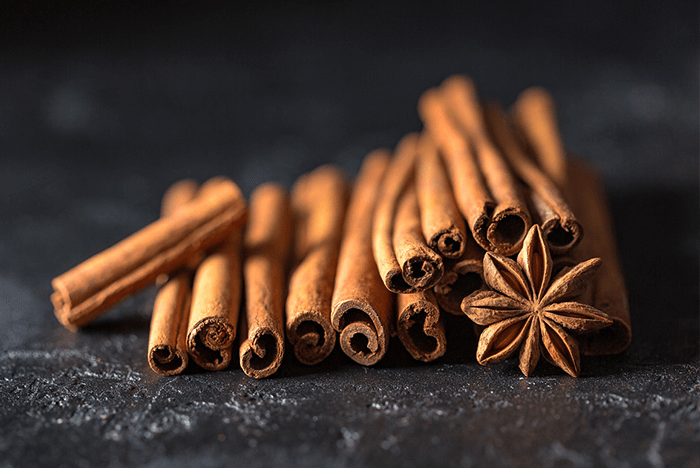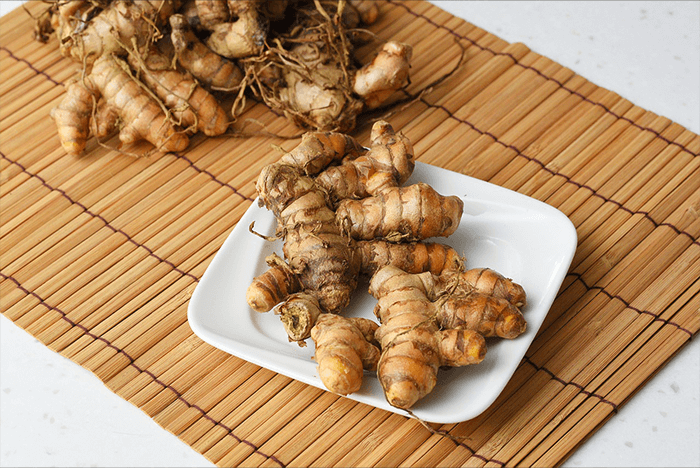Description:
Cinnamon is a spice derived from the inner bark of trees belonging to the genus Cinnamomum, native to South Asia, Southeast Asia, and China. It is one of the oldest spices known to humanity, used both for culinary and medicinal purposes for thousands of years.
There are two main varieties of cinnamon:
- Ceylon Cinnamon (Cinnamomum verum): Known as “true cinnamon,” it has a lighter, sweeter flavor and is primarily grown in Sri Lanka and Southern India.
- Cassia Cinnamon (Cinnamomum cassia): This is a more common and stronger-flavored variety, often found in the spice racks of most grocery stores, with origins in China and Indonesia.
Cinnamon is harvested by peeling off the outer bark of the tree, which is then left to dry and curl into rolls or sticks. It can also be ground into powder form. Its flavor is due to the presence of an essential oil called cinnamaldehyde.
Common Features:
- Appearance: Cinnamon sticks are curled pieces of dried bark with a characteristic golden-brown color. Ceylon cinnamon sticks are thinner and more fragile, while cassia sticks are thicker and harder.
- Flavor and Aroma: Cinnamon has a warm, sweet, and slightly spicy flavor, which comes from the essential oils in the bark. The aroma is rich and sweet, often described as soothing.
- Tree Characteristics: Cinnamon trees are evergreen and can grow up to 10-15 meters tall. The leaves are leathery, and the small, yellowish-white flowers are typically inconspicuous.
Role in the Ecosystem:
- Pollination: Cinnamon trees produce flowers that attract various pollinators, such as bees and other insects, which help in cross-pollination, vital for the reproduction of the species.
- Biodiversity: Cinnamon trees grow in tropical climates and are often part of diverse forest ecosystems, contributing to the ecological balance by providing habitat for various species of birds, insects, and other wildlife.
- Soil Health: As evergreen trees, cinnamon plants help prevent soil erosion, particularly in hilly regions. They also contribute to soil fertility by providing organic matter through the shedding of leaves and bark.
- Sustainability: Cinnamon can be harvested sustainably by cutting the outer bark without harming the tree itself. This allows for continuous harvesting without damaging the ecosystem, which is important for maintaining biodiversity.
Importance:
- Culinary Use: Cinnamon is widely used as a spice in both sweet and savory dishes. It’s a key ingredient in desserts like cinnamon rolls, pies, and cakes, as well as in beverages like chai tea and mulled wine. In savory dishes, it is used in various curries, stews, and meat dishes across many cultures.
- Medicinal Use:
- Antioxidant Properties: Cinnamon is rich in antioxidants that help neutralize free radicals, protecting the body from oxidative stress.
- Anti-inflammatory Effects: Cinnamon contains compounds that reduce inflammation, potentially benefiting conditions like arthritis and heart disease.
- Blood Sugar Regulation: Studies have shown that cinnamon can help regulate blood sugar levels, making it particularly beneficial for people with type 2 diabetes.
- Antimicrobial Properties: Cinnamon has been used in traditional medicine for its antimicrobial properties, helping fight off bacterial and fungal infections.
- Economic Importance: Cinnamon is a valuable global commodity. Ceylon cinnamon, in particular, is highly prized for its superior quality and fetches higher market prices. Sri Lanka, India, and Indonesia are some of the major producers of cinnamon, supporting the livelihoods of thousands of farmers in these regions.
- Cultural Significance: Cinnamon has been used for religious rituals, embalming, and as a perfume in ancient cultures. It was highly valued in trade routes and was considered a luxury item in medieval Europe.
Interesting Facts:
- Ancient Use: Cinnamon was highly prized in Ancient Egypt, where it was used in the embalming process and as a flavoring for beverages and foods.
- Cinnamon and the Spice Trade: Cinnamon played a significant role in the spice trade. In the 15th century, European explorers sought new routes to acquire cinnamon directly from Asian sources, leading to the discovery of new continents.
- Health Benefits: Regular consumption of cinnamon has been linked to improved heart health by lowering bad cholesterol (LDL) levels and stabilizing blood sugar.
- Varieties of Cinnamon: While Ceylon cinnamon is considered the “true” cinnamon, cassia cinnamon is more common in most households due to its availability and lower cost. However, Ceylon cinnamon is believed to have more health benefits and lower levels of coumarin, a natural compound that can be harmful in large amounts.
Sources:
- Britannica: Cinnamon Overview
- Healthline: Health Benefits of Cinnamon
- The Spice House: Cinnamon Varieties and Uses



